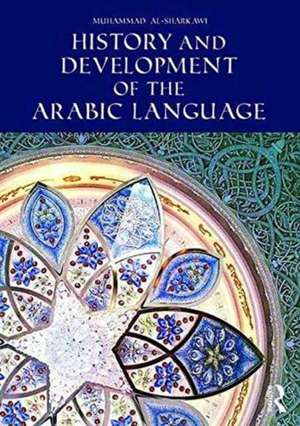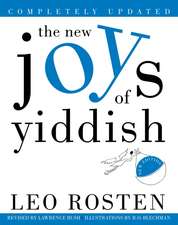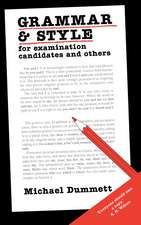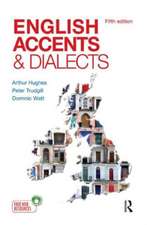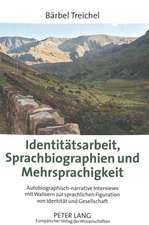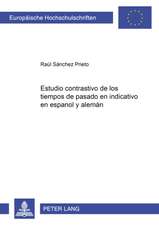History and Development of the Arabic Language
Autor Muhammad al-Sharkawien Limba Engleză Paperback – 8 dec 2016
The book includes readings, discussion questions and data sets to provide a complete textbook and resource for teachers and students of the history of Arabic.
| Toate formatele și edițiile | Preț | Express |
|---|---|---|
| Paperback (1) | 341.81 lei 6-8 săpt. | |
| Taylor & Francis – 8 dec 2016 | 341.81 lei 6-8 săpt. | |
| Hardback (1) | 934.46 lei 6-8 săpt. | |
| Taylor & Francis – 8 dec 2016 | 934.46 lei 6-8 săpt. |
Preț: 341.81 lei
Nou
Puncte Express: 513
Preț estimativ în valută:
65.40€ • 68.29$ • 54.13£
65.40€ • 68.29$ • 54.13£
Carte tipărită la comandă
Livrare economică 04-18 aprilie
Preluare comenzi: 021 569.72.76
Specificații
ISBN-13: 9781138821521
ISBN-10: 1138821527
Pagini: 274
Ilustrații: 6
Dimensiuni: 174 x 246 x 17 mm
Greutate: 0.48 kg
Ediția:1
Editura: Taylor & Francis
Colecția Routledge
Locul publicării:Oxford, United Kingdom
ISBN-10: 1138821527
Pagini: 274
Ilustrații: 6
Dimensiuni: 174 x 246 x 17 mm
Greutate: 0.48 kg
Ediția:1
Editura: Taylor & Francis
Colecția Routledge
Locul publicării:Oxford, United Kingdom
Cuprins
Preface
Introduction
Chapter One: The Geography and Demography of pre-Islamic Arabia
Part One: Sources of the Study of Arabic
Chapter Two: Trust Worthy Data
Chapter Three: Grammarians and the Dialects
Partt Two: Pre-Islamic Arabic
Chapter Four: The Pre-Islamic Linguistic Situation
Chapter Five: Pre-Islamic Dialects
Chapter Six: Signs of Development in Pre-Islamic Arabic
Chapter Seven: The Dual Paradigm
Chapter Eight: The Case System
Part Three: Arabic After Islam and Diaspora
Chapter Nine: The Influence of Islam and the Conquests
Chapter Ten: Arabicization
Chapter Eleven: The Dialects
Chapter Twelve: Dialect Division
Part Four: Classical Arabic
Chapter Thirteen: From Pre-Classical to Classical
Chapter Fourteen: The Functional Load of Classical Arabic
Conclusion
Tables
References
Introduction
Chapter One: The Geography and Demography of pre-Islamic Arabia
Part One: Sources of the Study of Arabic
Chapter Two: Trust Worthy Data
Chapter Three: Grammarians and the Dialects
Partt Two: Pre-Islamic Arabic
Chapter Four: The Pre-Islamic Linguistic Situation
Chapter Five: Pre-Islamic Dialects
Chapter Six: Signs of Development in Pre-Islamic Arabic
Chapter Seven: The Dual Paradigm
Chapter Eight: The Case System
Part Three: Arabic After Islam and Diaspora
Chapter Nine: The Influence of Islam and the Conquests
Chapter Ten: Arabicization
Chapter Eleven: The Dialects
Chapter Twelve: Dialect Division
Part Four: Classical Arabic
Chapter Thirteen: From Pre-Classical to Classical
Chapter Fourteen: The Functional Load of Classical Arabic
Conclusion
Tables
References
Recenzii
Dr Chris Lucas, SOAS
Would you consider the book for adoption?Definitely. A book of this type is sorely needed.
There is a great need for a book of this type. I think the author is capable of delivering it to a high standard.
Dr Peter Glanville, University of Maryland
For the Intro to Arabic Linguistics course, the biggest challenge is finding material. I would love to have one textbook that covers everything, but at present I have to mix and match. I have started using the Oxford Handbook of Arabic Linguistics this semester with two independent study students. This is going well, but I cannot envisage using it in a larger course. A book with readings and then discussion questions or data sets for class time would be great......
If the book actually delivers on what is claimed on p1 of the proposal, namely that it will introduce the history of Arabic and its contexts from Pre-Islamic through to Classical Arabic, using primary sources and case studies to establish the course of development, it will be great and I would certainly use it. The rest of the proposal does not spell out how this will be done in a convincing way however.
Dr Maher Bahloul, American University of Sharjah
The overall structure of the book outline seems quite coherent and should be reader friendly.... I would consider adopting the book.
This is a very informative book. It deals with issues of high relevance to the field of dialectology. It should be a useful addition and I am confident dialectologists will welcome this book.
Would you consider the book for adoption?Definitely. A book of this type is sorely needed.
There is a great need for a book of this type. I think the author is capable of delivering it to a high standard.
Dr Peter Glanville, University of Maryland
For the Intro to Arabic Linguistics course, the biggest challenge is finding material. I would love to have one textbook that covers everything, but at present I have to mix and match. I have started using the Oxford Handbook of Arabic Linguistics this semester with two independent study students. This is going well, but I cannot envisage using it in a larger course. A book with readings and then discussion questions or data sets for class time would be great......
If the book actually delivers on what is claimed on p1 of the proposal, namely that it will introduce the history of Arabic and its contexts from Pre-Islamic through to Classical Arabic, using primary sources and case studies to establish the course of development, it will be great and I would certainly use it. The rest of the proposal does not spell out how this will be done in a convincing way however.
Dr Maher Bahloul, American University of Sharjah
The overall structure of the book outline seems quite coherent and should be reader friendly.... I would consider adopting the book.
This is a very informative book. It deals with issues of high relevance to the field of dialectology. It should be a useful addition and I am confident dialectologists will welcome this book.
Descriere
History and Development of the Arabic Language is a general introduction for students to the history of the Arabic language. It is divided into two parts; the pre-Islamic language up to the emergence of the first well-known works of Classical Arabic. Secondly, the transition from the pre-Islamic situation to the complex Arabic language forms after the emergence of Islam and the Arab conquests, both in Arabia and in the diaspora. The book focuses on the pre-Islamic linguistic situation, where the linguistic geography and relevant demographic aspects of pre-Islamic Arabia will be introduced. In addition, the book will also discuss the communicative contexts and varieties of Modern Arabic.
